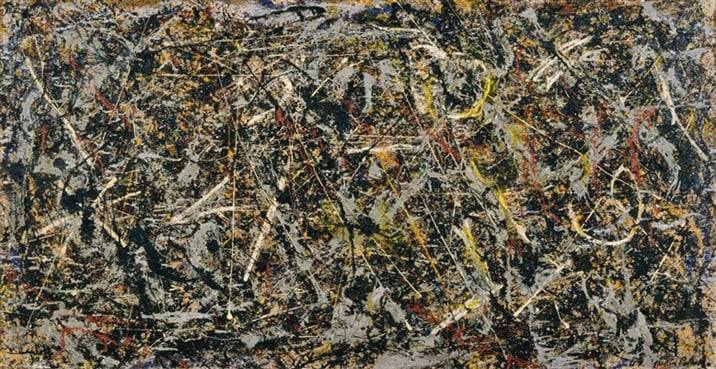Art & Exhibitions
Jackson Pollock Masterpiece Reveals Drip Paintings’ Secret


Lorena Muñoz-Alonso

Alchemy, a large-scale painting that Jackson Pollock painted in 1947, has returned to the Peggy Guggenheim Collection in Venice after going through an extensive conservation, In Collect reports.
The painting, whose appearance had been dimmed by dirt accumulated over the years, was taken to Florence, where it underwent an exhaustive analytical study, as well as a thorough cleaning and conservation procedure.
Crucially, the in-depth study of Alchemy yielded a sensational breakthrough: experts discovered that Pollock had used a structural plan to paint it. It had been previously believed that the composition was made up of random spatters and drops, but the analysis revealed delicate traces of white paint devising a sort of grid structure, which Pollock had created as means of compositional guidance.
Since last Saturday, Alchemy—thought to be one of Pollock’s earliest poured paintings—is back on display in Venice without any glass protection. This offers viewers an unprecedented insight at the work’s bright colors and dense sculptural surface, made of texturized layers of enamel, alkyd, oil paint, twine, sand, and pebbles.
Visitors to the exhibition, “Alchemy by Jackson Pollock: Discovering the Artist at Work,” will also encounter an installation with video, 3-D reproductions, touch-screens, and original items loaned from Pollock’s studio at the Pollock-Krasner House. This multimedia display is aimed to guide audiences through the most technical aspects of the conservation process.